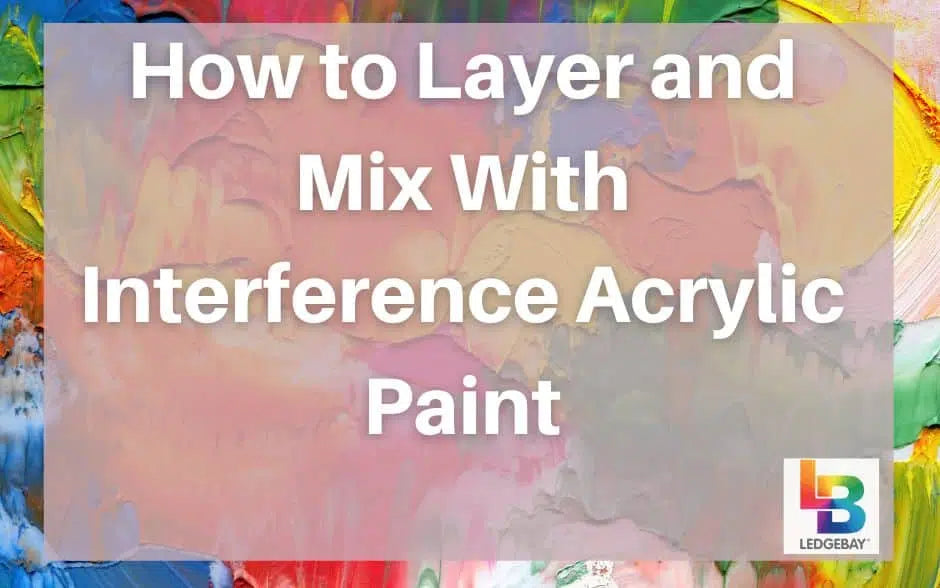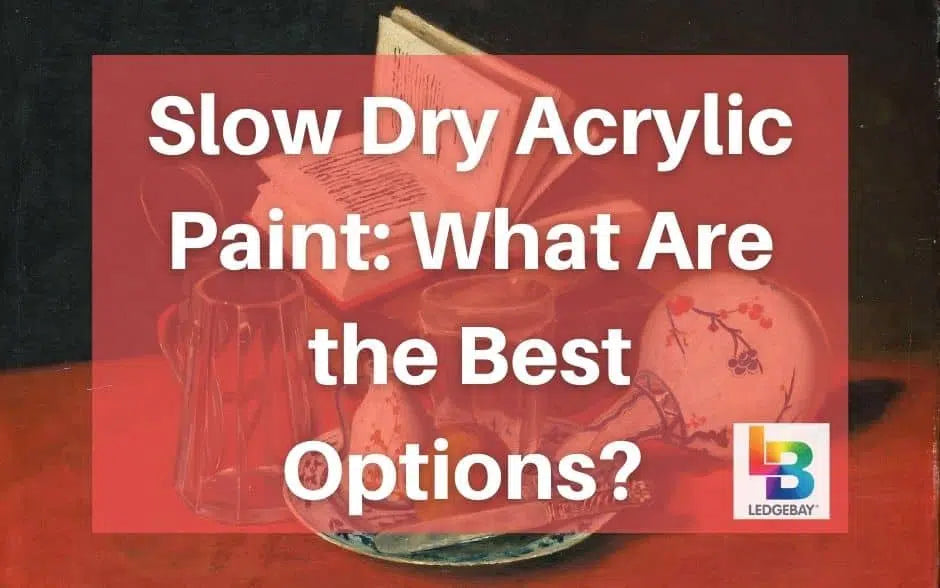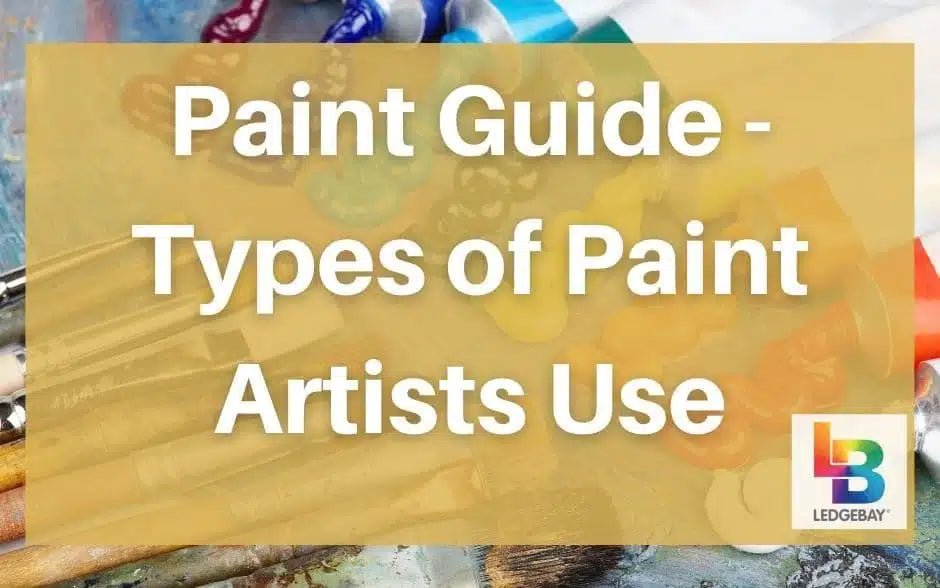In order to progress in painting, you need to know how paints work and what to expect from eachtype of paint . The two most commonly used paints are acrylics and oils. Thispaint guide will decide which one to use when painting, so let’s get started!
To properly start ourpaint guide, we’ll begin with a thorough yet simple explanation of the two most widely used paint types in paint by numbers kits: acrylics and oils .
Acrylic paints are synthetic paints that you canmix and blend just like oil paints. One of the main characteristics ofacrylic paint is that it dries in a very short time.
In fact, if you don’t use thepaint on your palette quick enough, it’ll dry right there. As such,acrylic paint is less forgiving with limited flexibility, so you must be decisive and act fast when you paint.
Because of the extremely quickdrying time, acrylic paint isn’t the ideal choice for painting portraits or other subjects since you’ll probably want to go in again and make adjustments.
There’s, however, a bright side to having a short drying period: you’ll be able topaint layer over layer rather fast. This is becauseacrylic paint doesn’t follow the “fat over lean, thick over thin” rule like oil does (more on this later), which also makes it the go-to option for beginners.
With that being said, if you are looking for commercial success early on as an artist, youneed to consider whether this ‘stigma’ may influence your chances of selling your paintings .
The truth is, the technology ofacrylic paint has undergone major developments over the recent years, so they’re certainly not less in quality compared to oil paints. Not to mention,acrylic paints weren’t even available for most painting gurus back in the day.
Time for anoil paint guide. Basically, oil paints consist of pigment (which gives the color) and a small amount of oil.
Mostoil paints available on the market are toxic. So, make sure they’re always out of children’s reach and be extra careful when you use them. To paint using oils, you’ll need the following materials:
When a medium is added, like more oil, the paint will apply more fluidly. So, you’ll end up using less paint from the tube.
The third material youneed is the paint thinner. It works to break down the oil and thin the paint. In oil painting, the purpose of apaint thinner is to speed up the drying process. A consistent balance between the amount of oil and paint thinner used is crucial in oil painting.
You should also consider investing in odorless solvents as the smell of the conventionalturpentine solvent can be strong enough to knock you out, or at least cause you a bad headache. Luckily, odorless solvents are now a thing and their smell is much less potent.
We can’t have an oil vs acrylicpaint guide without discussing the differences between the two, so let’s get to it.
The decision is ultimately yours. We do recommend that after experimenting with both paint types, you end up focusing on just one of them. After all, it’s better to master one medium than be average in multiple mediums.
If you’re abeginner at painting , we recommend you start with acrylics. Once you have the basics down, you cantry painting with oils.
Wrapping up thispaint guide , we can safely say oils and acrylics are both excellent mediums. No matter which paint type you decide to focus on, you can be a great artist.
CLICK HERE to shop our complete selection of acrylic paint by numbers kits!
Types of Paints
To properly start ourpaint guide, we’ll begin with a thorough yet simple explanation of the two most widely used paint types in paint by numbers kits: acrylics and oils .
Acrylic Paint
[amazon box="B08PZC3K9D"]Acrylic paints are synthetic paints that you canmix and blend just like oil paints. One of the main characteristics ofacrylic paint is that it dries in a very short time.
In fact, if you don’t use thepaint on your palette quick enough, it’ll dry right there. As such,acrylic paint is less forgiving with limited flexibility, so you must be decisive and act fast when you paint.
Because of the extremely quickdrying time, acrylic paint isn’t the ideal choice for painting portraits or other subjects since you’ll probably want to go in again and make adjustments.
There’s, however, a bright side to having a short drying period: you’ll be able topaint layer over layer rather fast. This is becauseacrylic paint doesn’t follow the “fat over lean, thick over thin” rule like oil does (more on this later), which also makes it the go-to option for beginners.
Cons of Acrylic Paint
With that being said, if you are looking for commercial success early on as an artist, youneed to consider whether this ‘stigma’ may influence your chances of selling your paintings .
- To prevent your acrylic paints from drying in a short time, you can try using a spray bottle to lightly sprinkle water over your palette.
- If you don’t have a lot of time to spare or you just don’t like painting for extended periods, consider picking only 1 to 3 colors to work with during each session and just paint the parts of the painting corresponding to those colors. For the following sessions, you can do the same but with new colors. This method stops you from filling the palette with all the colors at the same time, only for them dry on your palette.
The truth is, the technology ofacrylic paint has undergone major developments over the recent years, so they’re certainly not less in quality compared to oil paints. Not to mention,acrylic paints weren’t even available for most painting gurus back in the day.
Oil Paints
[amazon box="B002E9GUZ4"]Time for anoil paint guide. Basically, oil paints consist of pigment (which gives the color) and a small amount of oil.
Mostoil paints available on the market are toxic. So, make sure they’re always out of children’s reach and be extra careful when you use them. To paint using oils, you’ll need the following materials:
- Oil paint
- Medium (oil)
- Paint thinner (solvent)
When a medium is added, like more oil, the paint will apply more fluidly. So, you’ll end up using less paint from the tube.
The third material youneed is the paint thinner. It works to break down the oil and thin the paint. In oil painting, the purpose of apaint thinner is to speed up the drying process. A consistent balance between the amount of oil and paint thinner used is crucial in oil painting.
You should also consider investing in odorless solvents as the smell of the conventionalturpentine solvent can be strong enough to knock you out, or at least cause you a bad headache. Luckily, odorless solvents are now a thing and their smell is much less potent.
Paint Guide - Differences Between Acrylic and Oil Paint
[amazon box="1620083000"]We can’t have an oil vs acrylicpaint guide without discussing the differences between the two, so let’s get to it.
- Acrylic paint is more suitable for beginners. Acrylic paints are widely considered the number one beginner-friendly medium due to their simplicity of use. Also, they don’t require as many materials and are much less harsh on the senses than oil paints.
- Oil painting tends to be more expensive. The extra expense of oil painting comes from the additional materials required such as special cleaning materials plus oil mediums and solvents. You may also need a wider selection of palette knives, and to top things off, the paints and paintbrushes for oil painting themselves are usually more expensive.
- Oil paints drying a lot slower than acrylic paints. While this means you’ll have to wait longer for your painting to dry completely (sometimes up to a year), you’ll also have more flexibility for adjustments with oil paints.
- Acrylics are safer. If you’re someone who often worries about environmental or health aspects of using oil paint, acrylics would be a super compelling option because they’re non-toxic and don’t give a pungent, unpleasant smell.
Other Differences Between Oil and Acrylic
- For oil paints, it’s a fundamental rule that you paint thick over thin and fat over lean. When using oil paints, if the top layers of paint dry before the lower layers of paint (which are the layers you applied earliest), then the top layers will crack.
- Oil paints are way harder to control and clean than acrylic paints. You’ll need to invest in special cleaning materials to keep the mess of oil paints in check.
- Acrylic paints tend to darken as they dry. This isn’t an issue with oil paints, although some types do develop a yellow tinge over time. As a result, you’ll need to keep in mind such a color change when applying acrylic paints.
- Blending is easier with oil paints. This is thanks to the long drying time. With acrylic paints, blending isn’t as easy because they dry much quicker.
- Glossy vs matte finish. Oil paint gives a bit of a glossy and refined finish, whereas acrylic paint gives a more matte finish.
Paint Guide - What Paint to Use When Painting
[amazon box="B07RFHG7D1"]The decision is ultimately yours. We do recommend that after experimenting with both paint types, you end up focusing on just one of them. After all, it’s better to master one medium than be average in multiple mediums.
If you’re abeginner at painting , we recommend you start with acrylics. Once you have the basics down, you cantry painting with oils.
Paint Guide - Final Words
[amazon box="B07R3TCSYT"]Wrapping up thispaint guide , we can safely say oils and acrylics are both excellent mediums. No matter which paint type you decide to focus on, you can be a great artist.
CLICK HERE to shop our complete selection of acrylic paint by numbers kits!











